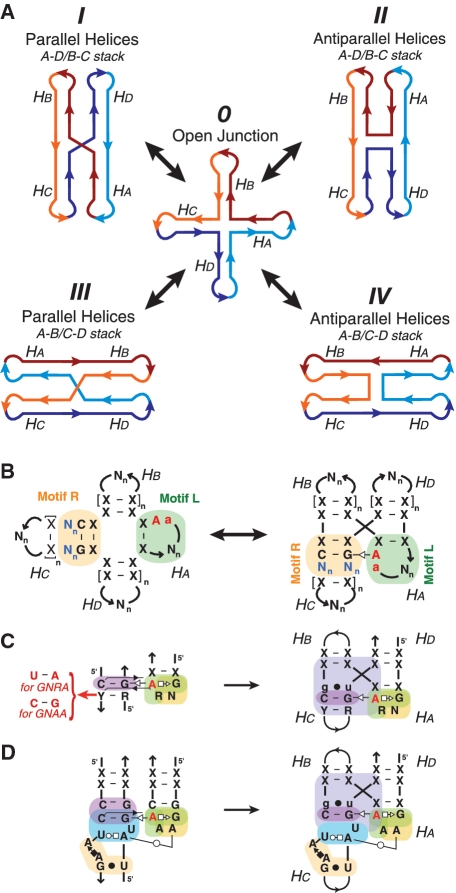Figure 1.
A-minor topological rule and 4WJ motifs. (A) Alternative stacking conformers of a 4WJ motif. In this model, adjacent helices can be oriented either parallel (I and III) or antiparallel (II and IV). Two possible helix stacking patterns are possible, Ha over Hd and Hb over Hc (I and II), or Ha over Hb and Hd over Hc (III and IV). Four-way RNA junctions can rearrange to the different conformers through the open state 0 (4) (see also Supplementary Figure S1). However, the A-minor interaction can properly form between stems Ha and Hc only when the 4WJ is in conformation I. (B) Definition of the topological folding rule for RNA A-minor multi-helix junctions: a loop-receptor interaction between Motif L on stem Ha and Motif R on stem Hc stabilizes the parallel helix stacking conformer. (C) Diagrams of the generic GNRA/helix interaction with phylogenetic variations (left) and the A-minor junction of the region (H57-H59) from archaeal 23S rRNA (right). (D) Diagram of the GAAA/11 nt as a loop–receptor interaction and as embedded in the context of the A-minor junction. For the annotation of the motif sequence signatures, see legends of Figures S3 and 4.

